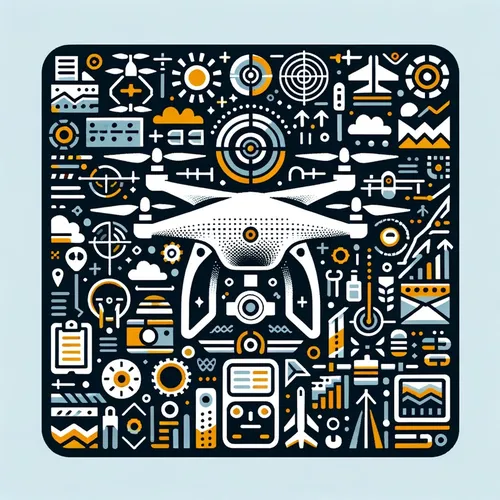Drones, AI, and You: Soaring Profits or Turbulent Times Ahead?
- Author
- Quiet. Please
- Published
- Wed 06 Aug 2025
- Episode Link
- https://www.spreaker.com/episode/drones-ai-and-you-soaring-profits-or-turbulent-times-ahead--67267641
This is you Professional Drone Pilot: Flight Tips & Industry Updates podcast.
For commercial drone pilots, aerial photographers, and inspection specialists, staying ahead means mastering both advanced flying and keeping up with a rapidly evolving industry landscape. For those seeking an edge in flight technique, AI-powered payload optimization is a standout trend this year, as reported by Dronefly, allowing professional pilots to automate sensor and equipment selection for each mission. Combining this with modular drone fleets means operators can efficiently switch payloads, reduce costs, and scale operations as market demand surges.
Keeping your equipment in prime condition is now more data-driven than ever. Companies are using AI and machine learning for predictive maintenance, which can anticipate failures before they ground your operation and help minimize downtime, notes Archivemarketresearch. Adding to these developments, a recent breakthrough from University of Texas at Arlington researchers highlights a low-cost radar-based preventive maintenance system, poised to bring affordable, scalable reliability monitoring to large commercial fleets. With fleet reliability now tied directly to business reputation, adopting management platforms like Airdata UAV can further automate flight logging, track certification status, and plan maintenance, keeping your operation compliant and always ready.
Staying licensed is a priority, especially as the US Federal Aviation Administration requires pilots to update knowledge with recurrent online training every two years, and registration rules have become stricter, according to the FAA. Common pitfalls for new operators include neglecting preflight weather analysis—ignoring conditions like winds, which can sap battery life and risk loss of control, or flying close to restricted airspace, which has new digital mapping tools that should be checked before every job.
This year, sectors such as utilities, real estate, and infrastructure inspection are expanding investment in drone services. Drone-as-a-service models, combining operations and maintenance, are gaining traction as businesses look to outsource complexity and focus on actionable data. Meanwhile, insurance providers are updating liability policies, prompted by both increased incidents and tighter regulations, so ensure your policy reflects your operation’s scope.
Clients expect tight turnarounds, so communication remains as critical as technical prowess. Clear contracts, transparent pricing, and strong incident reporting protocols help both retain business and justify premium rates as the market grows; the drone services sector is projected to rise at a 5.3 percent compound rate through 2033.
Looking ahead, with autonomous capabilities and AI integration, the industry moves towards higher-value analytics and more seamless workflows. Professional pilots should now focus on upskilling in software, fleet management, and airspace compliance to futureproof their careers.
Thanks for tuning in—be sure to come back next week for more. This has been a Quiet Please production, and for me, check out Quiet Please Dot A I.
For more http://www.quietplease.ai
Get the best deals https://amzn.to/3ODvOta
